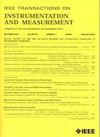A Hybrid-Model-Flux-Observer-Based Horizon-Adaptive Sliding Integration Fault Diagnosis Method for Sensorless Vector Controlled Voltage Source Inverter
IF 5.6
2区 工程技术
Q1 ENGINEERING, ELECTRICAL & ELECTRONIC
IEEE Transactions on Instrumentation and Measurement
Pub Date : 2025-04-02
DOI:10.1109/TIM.2025.3557119
引用次数: 0
Abstract
In this article, a horizon-adaptive sliding integration fault diagnosis (HSIFD) method based on a hybrid model flux observer is proposed for a single switch open-circuit (OC) fault in the sensorless vector control (SVC) fed voltage source inverter (VSI). It can achieve the diagnosis and location of the OC fault of the power switch quickly in real-time within the frequency regulation range. First, the compensation voltage is obtained in-loop by the deviation between the voltage model flux observer and the current model flux observer. Aiming at the problem that model-based methods rely heavily on precise mathematical models and parameter accuracy, a conversion method from time domain integration to phase angle domain integration is proposed to indirectly observe the periodic characteristics of compensation voltages. Then, the second-order equal phase angle moving mean (SoEPAMM) method is proposed to reduce the data storage and improve diagnosis timeliness. Simulations and experiments show the accuracy and superiority of the HSIFD method in the SVC framework. The proposed method can be implemented in-loop for practical applications since the storage and operation volumes are greatly reduced. Moreover, a comparison with other models shows that the proposed method is robust to the variation of model parameters, speed, and load.基于混合模型磁链观测器的无传感器矢量控制电压源逆变器水平自适应滑动积分故障诊断方法
针对无传感器矢量控制(SVC)馈电电压源逆变器(VSI)中的单开关开路故障,提出了一种基于混合模型磁链观测器的水平自适应滑动积分故障诊断方法。在频率调节范围内,可实现对电源开关OC故障的快速实时诊断和定位。首先,利用电压模型磁链观测器与电流模型磁链观测器之间的偏差在环内得到补偿电压;针对基于模型的方法严重依赖精确的数学模型和参数精度的问题,提出了一种从时域积分到相角域积分的转换方法,间接观察补偿电压的周期特性。然后,提出二阶等相角移动均值(SoEPAMM)方法,减少数据存储量,提高诊断及时性;仿真和实验证明了该方法在SVC框架下的准确性和优越性。在实际应用中,该方法可以在循环中实现,大大减少了存储量和运算量。此外,与其他模型的比较表明,该方法对模型参数、速度和载荷的变化具有较强的鲁棒性。
本文章由计算机程序翻译,如有差异,请以英文原文为准。
求助全文
约1分钟内获得全文
求助全文
来源期刊

IEEE Transactions on Instrumentation and Measurement
工程技术-工程:电子与电气
CiteScore
9.00
自引率
23.20%
发文量
1294
审稿时长
3.9 months
期刊介绍:
Papers are sought that address innovative solutions to the development and use of electrical and electronic instruments and equipment to measure, monitor and/or record physical phenomena for the purpose of advancing measurement science, methods, functionality and applications. The scope of these papers may encompass: (1) theory, methodology, and practice of measurement; (2) design, development and evaluation of instrumentation and measurement systems and components used in generating, acquiring, conditioning and processing signals; (3) analysis, representation, display, and preservation of the information obtained from a set of measurements; and (4) scientific and technical support to establishment and maintenance of technical standards in the field of Instrumentation and Measurement.
 求助内容:
求助内容: 应助结果提醒方式:
应助结果提醒方式:


